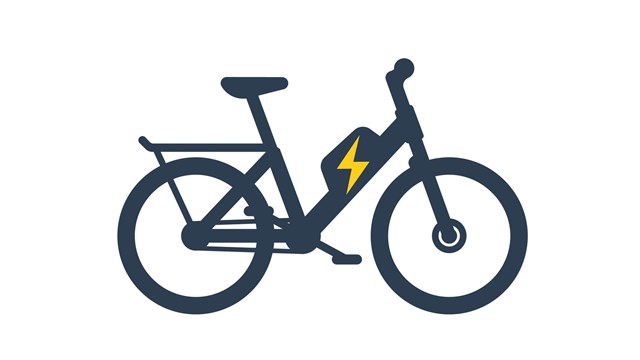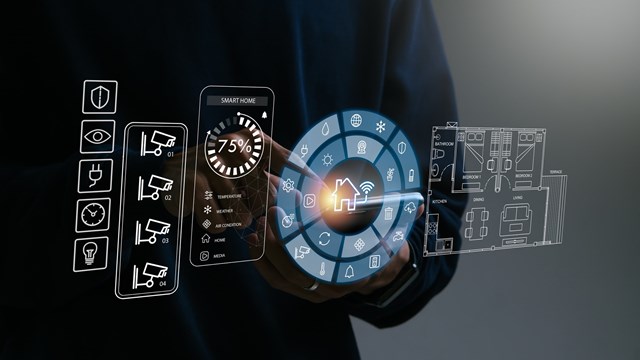
It’s often said that safety starts at home—and while many HOAs spend lots of money on sophisticated security and access control systems to protect residents and their property, others opt for lower-tech solutions to neighborhood security and crime prevention.
One such solution is the neighborhood watch organization: a group of concerned citizens coming together to make a commitment to be vigilant and observant and to do what they can in their own community to prevent crimes like vandalism, burglary, theft or even arson.
Neighborhood Watch, Block Watch, Building Watch, CrimeWatch—whatever you choose to call it, its one of the most effective—and least costly—ways to prevent crime. It also can also forge stronger bonds among residents and improve relations between police and the communities they serve.
A History of Result
Even if a building or condo community already employs electronic surveillance cameras and other high-tech security measures, there are always blind spots—and criminals need to know there’s someone watching. Effective as electronic surveillance can be, it can also give an association a false sense of security. According to security professionals, prevention methods work best when different approaches are combined; a surveillance system only functions in certain areas, while security guards or roving staff vehicles can’t be everywhere at once. A combination of both technology and real live human eyes and ears can help fill the gaps.
One way to get the human element involved is by implementing a watch program in your building or association. “In New York, neighborhood watch programs started in the early 1970s’ and was originally started by the National Sheriff’s Association,” explains Sgt. Kern Swoboda of the New York State Police and vice president of the New York State Crime Prevention Coalition. “The program is their baby, they manage it. Any significant changes or policy procedures in regards to managing a neighborhood watch program is managed by the National Sheriff’s Association or the National Association of the Chiefs-of-Police.”
Are watch programs effective? In a word, yes. Throughout the country, dramatic decreases in burglary and related offenses are reported by law enforcement in communities with active watch programs.
“Neighborhood watch groups are very effective, and they empower the community to take on responsibility in protecting their property,” says Swoboda. “It gives them a sense of pride in their environment.”
Michelle Boykins, a spokeswoman for the National Crime Prevention Council agrees, and quotes as evidence a 2008 study by the U.S. Justice Department titled “Does Neighborhood Watch Reduce Crime?”
“On the average, the study says, there was a 16 percent decrease in crime in communities with a watch group compared to control areas,” Boykins says. That's just the statistical average, however, not a universal truth, she adds. “The study cautions that the results of evaluations are mixed, and show that some programs work well, while others appear to work less well.”
Establishing a Group
According to Boykins, “In a condo or apartment complex, it may be more difficult to know all of your neighbors and to know if someone doesn’t belong or should be considered suspicious.” A motivated individual, a few concerned residents, a community organization or law enforcement agency—or a combination of any of the above—can spearhead the efforts to establish a neighborhood watch group. Other than the investment of personal time in organizing and administering the group, it costs very little to start one. You do, however, need willing participants and enough interest and support from the community or association to get things moving and keep them active and vital.
Frank Cotnick Jr., president of the Glendale Civilian Observation Patrol Inc., the oldest, largest and most active civilian patrol in New York City, says it only takes one concerned citizen to form a watch group. “If someone is interested in starting a watch group, they should go to their local police precinct and talk to their community affairs officer,” he says. “They will guide you through the process. When we first started, we were collecting nickels and dimes from the community but we eventually received city and state funding and became a nonprofit organization. Our paperwork is in order and there is transparency—and I think those factors add to our success. The police department will ask us to do certain tasks for them, like traffic detail or crowd control at parades. The police officers in the precinct have more important jobs.”
“The best place to start is if you are dealing with a specific building is to consult with the building management to see if they are interested, or if they can even allow something like that to occur,” says Swoboda. “If you have a building security department, they may be able to help you or empower you as well. If it’s just the citizens or the residents themselves, they may want to get a small planning committee of neighbors together and discuss exactly what they are looking to do. You have to work with you local law enforcement and any other neighborhood or block groups. You have to establish what your needs are. What is the immediate issue you are trying to target?”
It's also important to keep in mind that different communities have security different needs. “We have certain quality-of-life issues,” says Cotnick. “Sometimes we’ll look for illegal garbage dumpers. Graffiti was a big problem at one time. Sometimes we will look for specific people. For instance there was a problem was burglaries in the neighborhood. The police gave us a description of that person, and we went out looking for him specifically.”
Municipality vs. Condo, HOA?
Is there a difference between a neighborhood watch in a municipality versus an association watch in a planned community or condo development?
In a word, no. “There’s hardly any difference at all,” says Swoboda. “The responsibilities are still going to be the same—the biggest difference is the environment. A high-rise co-op or condo building is a much smaller environment—you are not looking out for each person’s yard; you're looking for things in common areas of the buildings. You’ll take a closer look at hallways, lobbies, the garden areas. You are also looking at what goes on around the perimeter of those areas.”
Boykins adds, “In a condo or apartment complex, it may be more difficult to know all of your neighbors and to know if someone doesn’t belong or should be considered suspicious.”
How They Work
Once citizen-led watch groups are established, they work to fight crime in several ways. Participants can conduct home security surveys, give their fellow residents tips for securing their homes while they're away on vacation, post yard signs and window stickers letting would-be burglars know they're being watched, install more powerful outdoor lighting, just to name a few.
“We go out on patrol, four or five cars, two residents per vehicle,” says Cotnick. “We drive around the neighborhood, and if there are any fire or medical emergencies we report them to the proper authorities. If there is a car accident, sometimes we will direct traffic. If there is a big fire we will work with the emergency vehicles in the area and also keep other vehicles out of the area. We just drive around and keep our eyes and ears open. If it’s 2 or 3 o’clock in the morning and you see a kid underneath an overpass and hear a paint can jiggling—chances are he’s doing graffiti or is about to do it, or if you see a male on a bicycle circling a woman who seems scared and walking really fast, you know something is wrong there.”
Among the more serious “red flags” watch participants keep an eye out for include someone looking into windows or parked cars, open garage doors, property being taken out of houses where no one is home, broken-out lighting fixtures, slow-moving cars or vans with no apparent destination, strangers getting out of a car to talk to a child, groups of unknown young people wandering around, newspapers piling up in front of a home, and abandoned cars. Watch groups can also take notice if a particular person, such as a well-known neighborhood dog walker, for example, hasn’t been around lately, and can look after people who may be isolated and vulnerable, such as the elderly and the disabled. Above all, members must stay alert.
In addition to active patrolling, Boykins says that neighborhood watch groups can sponsor community programs like bike safety workshops, checking community lighting after the sun goes down, and neighborhood walking clubs.
The Zimmerman Problem
Of course, any discussion of current or future neighborhood watch programs must include at least a mention of the shooting of Trayvon Martin. The facts of the case are well-known, thanks to the media attention it garnered: One night in February 2012, in a gated community in Sanford, Florida, neighborhood watch volunteer George Zimmerman followed 17-year-old Trayvon Martin, whom Zimmerman deemed suspicious. Despite the fact that a police officer told Zimmerman he should not follow Martin, Zimmerman continued his pursuit, engaged Martin, and after a struggle, shot and killed the unarmed teen. The case became a cause célèbre, with widespread allegations of racism and vigilantism on Zimmerman’s part. Zimmerman’s eventual acquittal on second-degree murder charges did little to end the controversy.
In the wake of the Zimmerman case, neighborhood watch groups came in for scrutiny and criticism. But security and law enforcement pros stress that there is a big difference between a legitimate, well-organized neighborhood watch group acting as the eyes and ears of their community versus people acting as vigilantes and taking the law into their own hands. The key to remaining on the right side of that distinction is communication and cooperation between the watch group members and law enforcement.
If a watch group participant seems a little overzealous, Boykins says “It's best to discuss their behavior with them, and hold a meeting with the watch group to discuss guidelines and parameters for all volunteers to follow.”
“We are unarmed civilians, we are the extended eyes and ears of the police department,” says Cotnick. “If we see a crime in progress, we would be sitting in our car and we would call the police. We take no action and we absolutely don’t confront people.” For most condos and HOA developments, especially those in the boroughs that may be spread out over a large area, a neighborhood watch group could be worth a try. Residents or boards that are interested should contact their local police or sheriff’s departments.
More than anything, it's important for residents to take an active interest in their security and their surroundings. “If you live in a condo, get to know who your neighbors are so that when you see someone in the hallway you don’t feel nervous about saying hello,” says one watch organizer. “If you familiarize yourself with people in your building you won’t have any hesitation saying ‘Oh hi, are you here to see someone in the building?’”
Raanan Geberer is a freelance writer and a frequent contributor to The Cooperator.






Leave a Comment